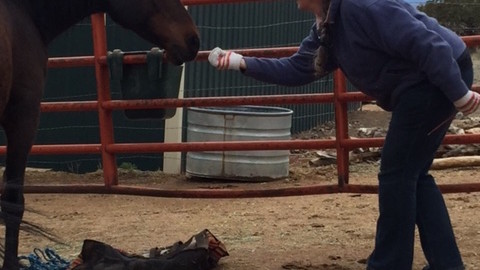The two horses rub each other’s necks, ferreting out the itchy or sore spots in each other. How do they know to do this? Is their mutual grooming actually bodywork?
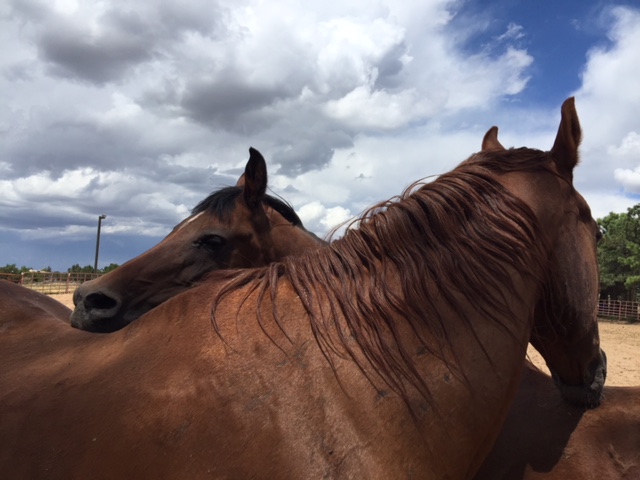

The two horses rub each other’s necks, ferreting out the itchy or sore spots in each other. How do they know to do this? Is their mutual grooming actually bodywork?

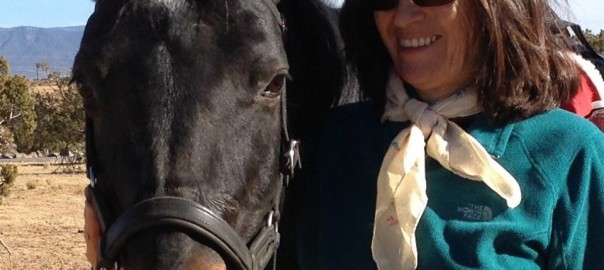
It’s a rainy day as I write this. A rainy day in New Mexico is generally cause for celebration. The state squeaks out 13.85 inches average rainfall per year.
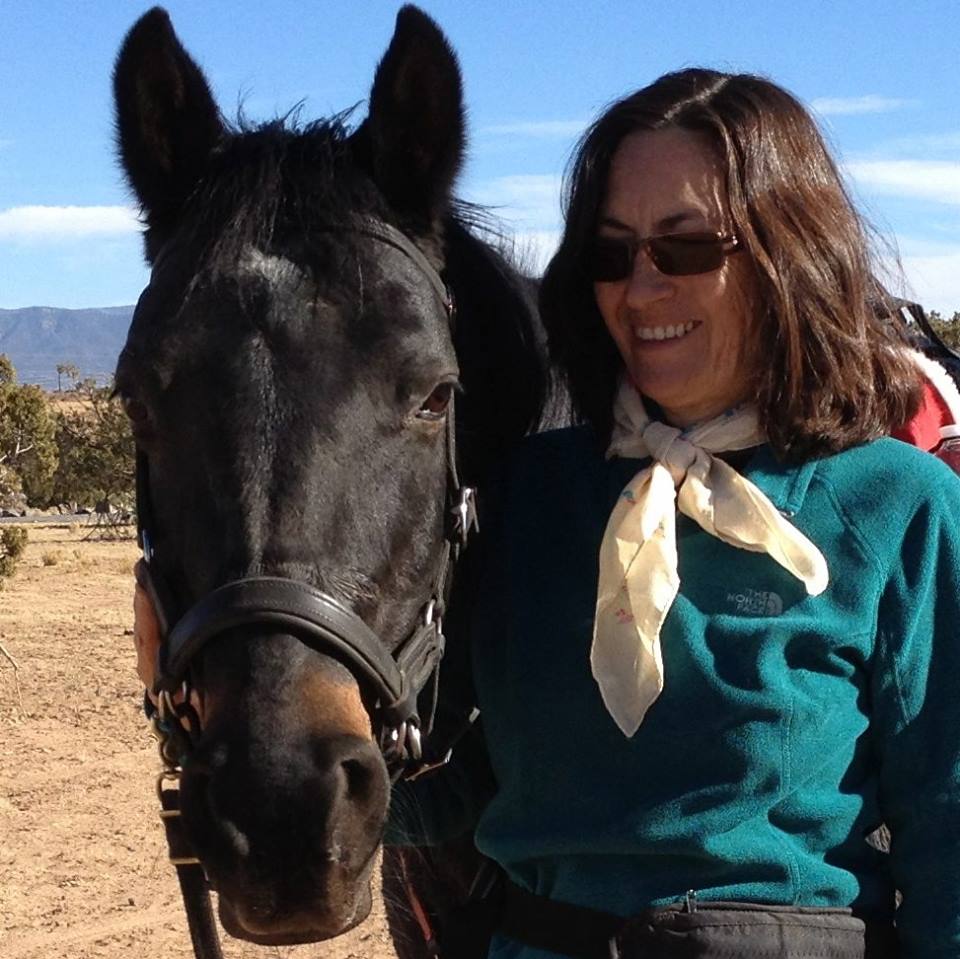
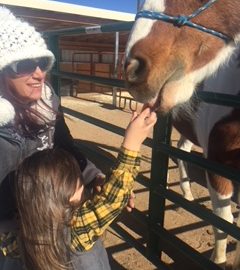
Once again, I address the thing I’m not all that good at: resolutions for the New Year. I try to make them easy and attainable, otherwise they go the way of crash diets and best laid plans that get forgotten the moment stress or a better offer sets in.
This Christmas we had the joy of having our wonderful family: son Cory, wife Amber and three-year-old grandson Avery visiting. Their visit brought many new insights to me, as it reminded me what it was like to be new parents . The care of new parents is so special and sweet, and all-consuming.
The other thing dear little Avery brought to me was the sheer joy of discovery. He got to feed and pet horses for the first time. If I’d had the video running I would’ve captured his squeals of delight and jumping up and down. I did catch this photo of Avery feeding Patches a carrot with his mom standing by.
So this brings to me to the first two Horse-olutions for you for the New Year:
Add a global view to your vision. If you find yourself getting really focused on one thing: a 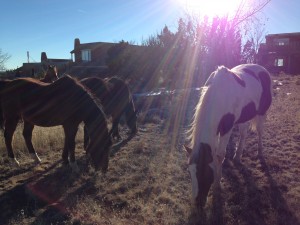 behavioral issue, a health issue, etc., take a step backward and see the bigger picture. In working at liberty and bodywork, many times I’ve experienced a horse who couldn’t stand the scrutiny of the person working with him. Either she was too close or her concern was too great. I ask her to take a step backward and the horse will turn his head to her and acknowledge her beautifully. Her recognition of his need for space was profound. This is a metaphor for life.
behavioral issue, a health issue, etc., take a step backward and see the bigger picture. In working at liberty and bodywork, many times I’ve experienced a horse who couldn’t stand the scrutiny of the person working with him. Either she was too close or her concern was too great. I ask her to take a step backward and the horse will turn his head to her and acknowledge her beautifully. Her recognition of his need for space was profound. This is a metaphor for life.
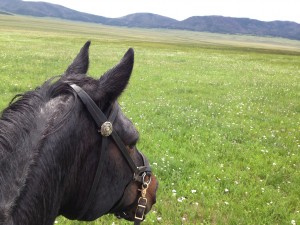 Continue the joy of discovery. A new trail, a new experience. Just yesterday my mare Jazzie decided she wanted to take a different trail home, and we bounded through the arroyo and up a hill to arch around some houses to home. The joy in her was so much fun. I was reminded of Avery with his squeals of delight at getting to pet the horses, and finding a special bond with one of them in particular. As a child my parents took me into the English countryside for picnics. The highlight of that trip was getting to pet a horse over a fence. Perhaps that was the start of the addiction for me.
Continue the joy of discovery. A new trail, a new experience. Just yesterday my mare Jazzie decided she wanted to take a different trail home, and we bounded through the arroyo and up a hill to arch around some houses to home. The joy in her was so much fun. I was reminded of Avery with his squeals of delight at getting to pet the horses, and finding a special bond with one of them in particular. As a child my parents took me into the English countryside for picnics. The highlight of that trip was getting to pet a horse over a fence. Perhaps that was the start of the addiction for me.
Maybe you’ll discover something new in one of your horses, or in your life. I wrote about this last year, but new never gets old!
Respect differences. Notice how you interact with different people. Horses do that too. They 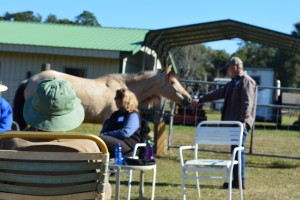 don’t respond to everyone the same way. Sometimes you are drawn to people and sometimes repelled by them. Sometimes you think you will be friends with someone but the friendship never quite happens. Horses are capable of great bonds with each other and people. Notice what they are and protect your horses from those they aren’t comfortable with, and fill their lives with positive relationships if you can.
don’t respond to everyone the same way. Sometimes you are drawn to people and sometimes repelled by them. Sometimes you think you will be friends with someone but the friendship never quite happens. Horses are capable of great bonds with each other and people. Notice what they are and protect your horses from those they aren’t comfortable with, and fill their lives with positive relationships if you can.
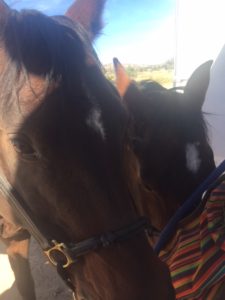
Work with energy. Energy is part of the previous horse-olution but is part of everything we do. Horses seek positive, grounding energy in humans. It’s not necessary to do anything, just be yourself. If you don’t know yourself well, the horse may know you better than you know yourself. If you’re anxious and your anxiety transfers to your horse, pay attention to that. Maybe change your agenda for the day or until you can become still inside.
Just know that every emotion you have, the horse experiences. They may not understand its complexity, but they feel it. The horse’s presence may be calming, but make sure your presence is not disruptive to the horse so he or she doesn’t absorb it and act on it. Don’t hide your emotions, but on the other hand, I think it’s best not to use your horse as a dumping ground for emotional baggage.
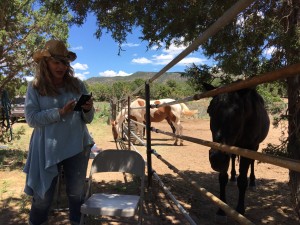
Talk to your horses and around your horses. This past week my granddaughter Ariana and I were working on some teaching videos with the horses. The sounds of our voices put them to sleep. Of course, that could mean we’re incredibly boring, but I tend to think it was soothing to them. I did some hands-on, and all the horses not receiving any work dozed off.
I’ve noticed that when I’m mucking, or brushing, if I talk to them, they become very relaxed. They like my noticing things about them, asking how they got this scratch or noticing where they are sore.
Work with other horses. It’s easy to think all horses do the same things, and there are some general things that all horses do. But when you get a chance to work with multiple horses, it broadens your view of the horse world.
When I meet horses, I want to take in their personalities. Who are they? What do they want to show me?
When I only worked with my own horses, I had a limited view of them. Since I see many horses, I can bring the knowledge I gain from others home to my horses and they benefit. That’s why the workshop setting is so valuable; we get to work with many horses and see differences and similarities.
We can also gain a more neutral perspective.
Remember gratitude. With all the wants entering into daily life, I remind myself to be grateful for what is. For family, the horses I have, the health I have, the work I’m entrusted to do. With each year, new opportunities arise and others fall away. To mourn the loss of beloved beings is natural, and takes time and a holding place. Gratitude has its place in honoring what was loved and what is still here to be loved. Spring will come and a new order can rebalance losses and gains in ways we never can predict.
Breathe. My mare Zuzka started teaching breathing exercises at workshops about two and
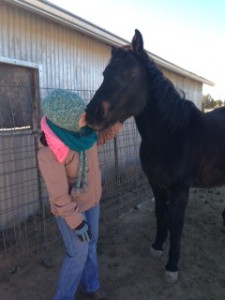
a half years ago. She wanted people to just stand and breathe with her. She wanted me to breathe with her. No touching, nothing else. While I was teaching a lesson, she decided she didn’t want to do the lesson, it was time to stop and breathe.
That was a more important lesson to me than what was on my agenda!
This way of breathing is a way of being together without doing. She may want to breathe on your face, or synchronize breath with you. While doing bodywork, often I will feel the horse breathe into a tight or sore spot. This is another way of using breath in a very constructive manner.
Yoga breathing exercises are great, yet I know no horse who has taken a yoga class – they know this on their own. Zuzka’s message is quite simple: stop doing and breathe.
The breathing is something I now do often – before I ride or do groundwork, or when I feel I’m not quite centered. Just taking that moment can make all the difference.
Happy New Year! My wish is for your new year to be full of joy and promise!
(c) Susan Smith, Horses at Liberty Foundation Training, Equine Body Balance (TM)
Please see my
Events for information on upcoming clinics and workshops.
I was lying on the massage table receiving physical therapy recently and talking about myself as I was asked to do, past injuries, etc., and then I made a switch to talking about one of my horses. My therapist expertly swung me back to the discussion of “me,” which is why I’m there, and I realized something – not just about me, but many of us who work with horses or love them.
We would prefer to talk about horses than anything else. Horses are like meditation to us.
They are definitely calming, even when talking about something that isn’t right with them.
But there is another piece to this which may sound wild to some people, but I’ll put it out there: we get lost in the horse. It becomes an “out-of-body-experience” when we need to be in our bodies to experience it. We need to be in our bodies to give the horse her due, and to heal ourselves.
This is the awareness, the eye-opener, that appeared to me on that table, that I want to share with you, because I am so good at doing this myself.
I know I’m talking about several different things, but I’m really talking about the same thing. I’m talking about staying in the moment, in the body. If I am to learn the new way of using my body in physical therapy, then I need to be in the moment to absorb all the nuances of what my practitioner is telling me. It’s not a time to wax eloquent on how far one of my horses has come in his physical or emotional development!
While sometimes the conversation can be helpful for bringing us around to the true story of one’s own body, it can also take us far afield, out of ourselves and pain.
I’m in physical therapy for a reason, because I’m healing from something. Pay attention.
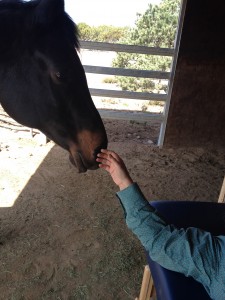 Being “in the moment,“ and “in the body” do take some time and energy to achieve, especially in Western society. We are expected to be out of the body in a lot of our daily interactions with people and in our jobs.
Being “in the moment,“ and “in the body” do take some time and energy to achieve, especially in Western society. We are expected to be out of the body in a lot of our daily interactions with people and in our jobs.
But horses live in the body and in the moment, so they would like our interactions with them to take place there.
I will say that with every horse mishap and accident I’ve had, I’ve been out of my body. My energy has not been centered. People who come to me after horse wrecks tell me all the time, “I knew that I shouldn’t have gotten on…” “I knew the horse wasn’t ready…” because it can be the horse that is not agreeable also, not just the person.
What has helped me to stay in my body has been a variety of things. There will always be things to pull me off course. But these steps help me stay focused:
When I work with horses in a healing capacity, if they are trying to avoid my noticing something painful, they will flatten their ears or kick out maybe, or become dull in the eyes. They may move away from me and give me the distinct impression I’m not welcome. Sometimes the mere intention of wanting to heal will make them nervous. I have to arrive in their space with less agenda and give them space. The space may be then filled with part avoidance, but will gradually turn to curiosity as I work in areas that are not so triggered for them.
With the horse, while their natural state is to be in the body all the time, when people are around and trying to help with pain, sometimes they get “out of the body” too, just like us.
![[Catherine Sobredo Photography]](https://susansmithsantafe.com/wp-content/uploads/2012/08/imgp2369-edit-199x300.jpg)
Sometimes we know we need help with something, but we are operating with our foot on the brakes and accelerator at the same time because of pain, whether physical or emotional.
Deflecting attention away from the pain can also be a way of not being in the body or the moment.
The horse also knows that we know how to figure out a lot of things. This is one of the things they like about us, and attracts them to us. We may not be as smart as them in some ways such as staying in the moment for such long stretches of time, but we can get aha moments and figure out how to help them because we have the intellect.
What has helped me a lot with the “lost in the horse” issue is to work on something that is my challenge and include one of my horses. For example, the PT work has offered me new ways to walk and sit. I’m applying that new knowledge to my walking with my horse, and my sitting in the saddle. This can best be done with a horse with whom you have a good relationship with, not recommended with one you’re trying out for the first time!
I find my horse – whichever one either comes forward for the task or I feel is the one for that activity – enjoys being helpful and helping me figure it out. The horse will behave much the same way with this helping activity as they do when you introduce new activities for them. The added plus is that they can not only feel a sense of accomplishment from completing the activity, as they do with ones planned for them. But they can feel a sense of accomplishment in helping you solve a problem.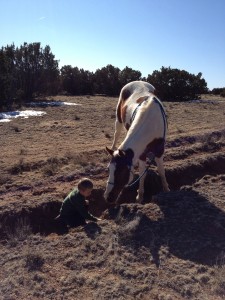
All of this helps me stay in the moment. It also gives me something new to talk about when I go to PT and can talk about the progress I have made, still weaving in my horse stories, but now in relationship to the PT work!
(Some of these new insights will be incorporated into this year’s Conformation, Compensation or Both? classes offered in Florida, Santa Fe and Oregon. The relationship work will be detailed in the class Equine Liberty from the Heart, offered in Santa Fe, NM)
(c) Susan Smith, Horses at Liberty Foundation Training, Equine Body Balance (TM)
Please see my
Events for information on upcoming clinics and workshops.
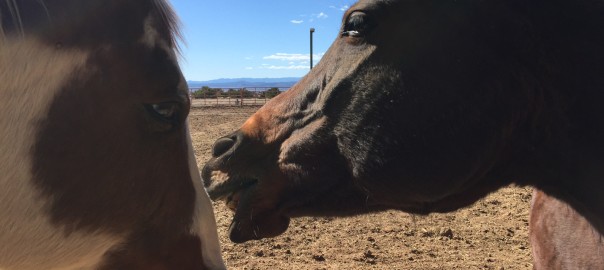
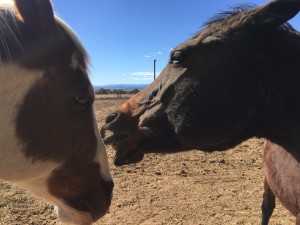 In horse training, leadership is discussed a lot. If the person doesn’t have leadership, the horse will not be as responsive to them. There are people who are born with innate leadership. In horses, leadership potential can be recognized the moment the foal drops to the earth.
In horse training, leadership is discussed a lot. If the person doesn’t have leadership, the horse will not be as responsive to them. There are people who are born with innate leadership. In horses, leadership potential can be recognized the moment the foal drops to the earth.
A breeder friend of mine once said, of certain foals, they recognized it in themselves and you as a person could immediately recognize this presence, this ability to be a leader. It wasn’t necessarily attached to physical attraction or size. It generally has to do with the presence of the individual and their awareness and caretaking ability, of other members of the herd.
Continue reading Leadership revisited – both horse and human
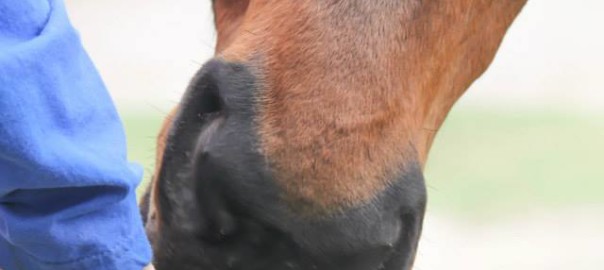
One reason I like to teach Liberty Foundations is because it offers a true reading of the horse, but it also gives a true reading of the person working with the horse.
When people work with the horses that come to the clinics, they are often working with horses who don’t know the Liberty Foundations at all, and start from scratch. We begin with some dimensional exercises, to be sure we are not carrying unwanted baggage into the workspace with the horse, that may influence how she is responding. This also shows what we need to do to adjust our energy.
Once we are with the horse, we can see what further adjustments need to be made with energy.
I start the horse, then the owner or attendee will work with the horse, and start building the foundations, and in turn, the relationship. What is beautiful is that we work toward the horse being able to transfer her knowledge of one relationship to the next student, and refine that knowledge and connection with each student.
Often people work with horses who are not their own, and this is sometimes freeing in terms of not dealing with an ongoing relationship. It allows students to also experience a number of different horse personalities and energies.
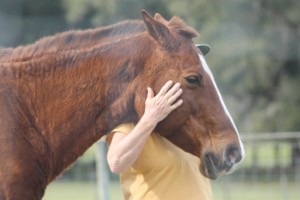
If the person has brought their own horse, sometimes the person’s relationship with their own horse is one where the horse takes advantage of some aspect of the person. Or the person is so accustomed to their own horse, that they don’t correct their horse with any show of leadership. Or their energy is too strong for that particular horse.
There is what I call a “tipping point,” where the owner or handler can become uncentered in trying to get their horse to do something. Once they are uncentered, their influence over the horse diminishes. I have had this happen to me, and it’s important to recognize it as it comes out of our desire to effect a change. It also comes out of our desire to have the horse love us and want what we want.
Consider asking these questions:
1. Does your horse step into your space when you are working with her?
2. Does your horse ignore you a large amount of the time?
3. Is your horse agreeable but seems to have no real life in her for the work you’re doing together, or tries to hurry through it?
4. Do you feel yourself tumbling toward your horse, in your eagerness to have her like you and do things with you?
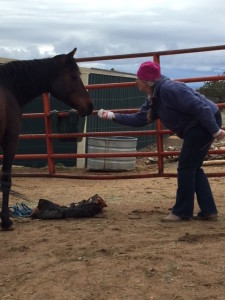 One of the important things about Liberty Foundations is there is essentially no agenda. The steps are sitting with the horse, greeting the horse, moving with the horse, in ways that are common and familiar to the horse. If the horse chooses not to engage, it’s not a big deal.
One of the important things about Liberty Foundations is there is essentially no agenda. The steps are sitting with the horse, greeting the horse, moving with the horse, in ways that are common and familiar to the horse. If the horse chooses not to engage, it’s not a big deal.
If the horse continually chooses not to engage, then we aren’t being engaging enough! We can read the intention of the horse and read our own intentions. What do we want? What do we want the horse to do? He refuses to connect!
We are looking for willing participation. In other forms of horsemanship, people can have great results with a lot of horses, but the horses are not always willing participants.
The way we work in Liberty Foundations is in a larger space, a small arena, with corners or even a paddock, where the horse has the freedom to leave any time he or she wants.
Through our sitting with and greeting the horse, the horse learns to accept our presence in the herd. Through our walking behind her, she learns that we can have the same influence as other horses, and can come into rhythm with her. Changing that up to walk beside her, and we are companions, taking a stroll together, looking at the horizon, grazing, spending time like a horse. Moving the horse away and inviting her back, she learns that the relationship has a flow, that some space is necessary in the relationship, but that we will come back to each other with a stronger bond.
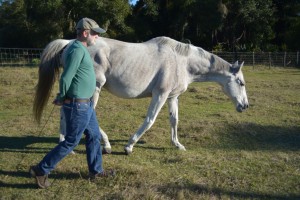
Out of this quiet, focused effort, our horses will want to engage. Their interest in activities we introduce will increase. We’ll learn what their preferences are and be able to make modifications and bring joy. Other training methods will grow organically from these Liberty Foundations as we continue to move along the pathway to introducing what we need in our training programs.
I have included some videos of the work, with myself and students, with horses who are both ridable and not, with horses who have had a lot of Liberty Foundations and those who have had none.
We are seeking a change, a shift in relationship, by allowing it to emerge. We want eyes, ears, gestures, to all point to a soft, willing horse, not one who is just going through the motions.
To get this, we need to be specific in our directions, and not be tipped over into wanting certain responses, seeking love or understanding, seeking a bond that will come if the person just stays centered, breathing, in the moment.
It’s important for the person to increase the amount of time they can stay in the moment, which will naturally increase as they practice this work. The horse always lives in the moment, so she can guide us on this journey.
If you’ve answered “yes,” to any of the questions posed above, see if you can change that around as you work with Liberty Foundations.
Videos:
The Shaping of a Liberty Horse
Prairie Flower with Jazzmine and Lorrin
Transitioning to Riding from Liberty Foundations Groundwork, September 2013 Clinic
(c) Susan Smith, Horses at Liberty Foundation Training, Equine Body Balance (TM)
Please see my
Events for information on upcoming clinics and workshops.
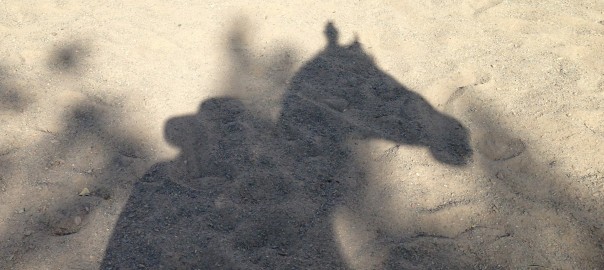
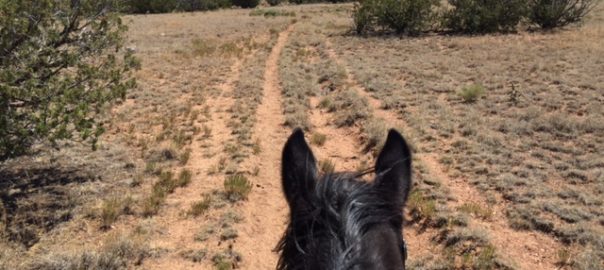
” Do not go where the path may lead; go instead where there is no path and leave a trail.”
– Ralph Waldo Emerson
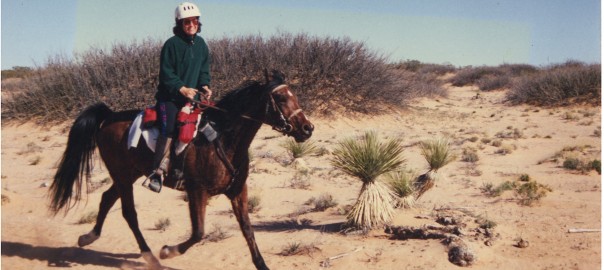
The trail followed the creekbed then crossed it, curving like a snake up the side of the canyon. My horse stopped to drink in the creek, then scaled the rocky side of the canyon and the switchbacks, a steep drop on one side, a canyon wall on the other.
